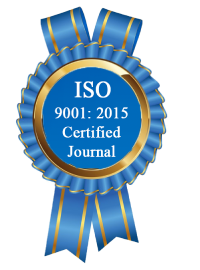| All | Since 2020 | |
| Citation | 172 | 110 |
| h-index | 7 | 5 |
| i10-index | 1 | 0 |
WJERT Citation 
Login
News & Updation
Abstract
PREDICTION OF DAILY SOLAR RADIATION IN SOUTHEASTERN NIGERIA USING EXTREME GRADIENT BOOSTING MODEL
*Isaac Raphael Okafor, Egarievwe Stephen, Guangming Chen, Garfield Jones, Osuagwu Onyema and Agbalagba Ezekiel
ABSTRACT
The prediction of solar radiation (SR) is important for effective and reliable design, operation and optimization of solar energy systems, as well as for agricultural and environmental applications. Conversely, in the developing countries like Nigeria-southeast geopolitical zone, long-standing records of global solar radiation data are not available in many places because of the cost and maintenance of the measuring instruments. As a result, the current interest in the utilization of solar energy potential have made researchers to continue exploring alternative methods such as empirical models to predict SR using meteorological and geographic parameters. Due to the lack of dailysolar radiation data, researchers like Dada and Okogbu have developed methods to estimate daily values from monthly averages using Fourier series, which is essential for accurate solar energy assessments (Dada & Ec 2016). In this study, two (2) machine learning models such as the gradient boosting (GBoost) and Extreme gradient boosting (XGB) regressors are investigated for real time ground-based measured solar radiation prediction in southeastern Nigeria. Daily solar radiation parameters data such as temperature, relative humidity, precipitation, surface pressure, wind speed and wind direction were collected from the National Aeronautics and Space Administration (NASA) Prediction of Worldwide Energy Resource (POWER) for 10years ranging from 2012 to 2021 and used as training/testing data while developing the model. The models performance was evaluated and compared based on the statistical evaluators such as root mean squared error (RMSE), normalized root mean squared error (nRMSE), and coefficient of determination (R2). The two models were found significant in the prediction of solar radiation for the region based on the statistical indicators. Out of the two significant models, XGB regressor model emerged as the best /or most efficient model for the region with maximum coefficient of determination (R2) and minimum RMSE and NRMSE respectively. The results showed that Ebonyi state has XGB, R2 of 97.2%; GB, R2 of 90.2% Anambra state has XGB R2 of 95.9%; GB, R2 of 84.1%; Imo state has XGB, R2 of 95.2%; GB, R2 of 83.1%; Abia state has XGB, R2 of 94.8%, GB, R2 of 82.4% and Enugu state has XGB, R2 of 93.9%; GB, R2 of 83.2%. The average nRMSE of % of Performance of XGB over GB in the five Southeastern States was found to be 95.8% and the average RMSE of % of Performance of XGB over GB was found to be 88.49%. The result is an indication that XGB model is of best fit for the prediction of solar radiation in the Southeastern Nigeria.
[Full Text Article] [Download Certificate]
